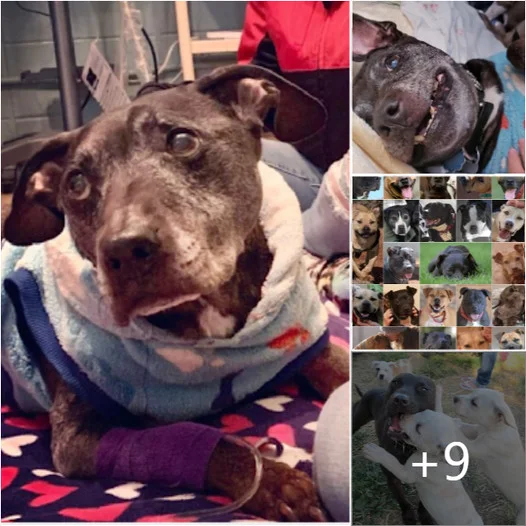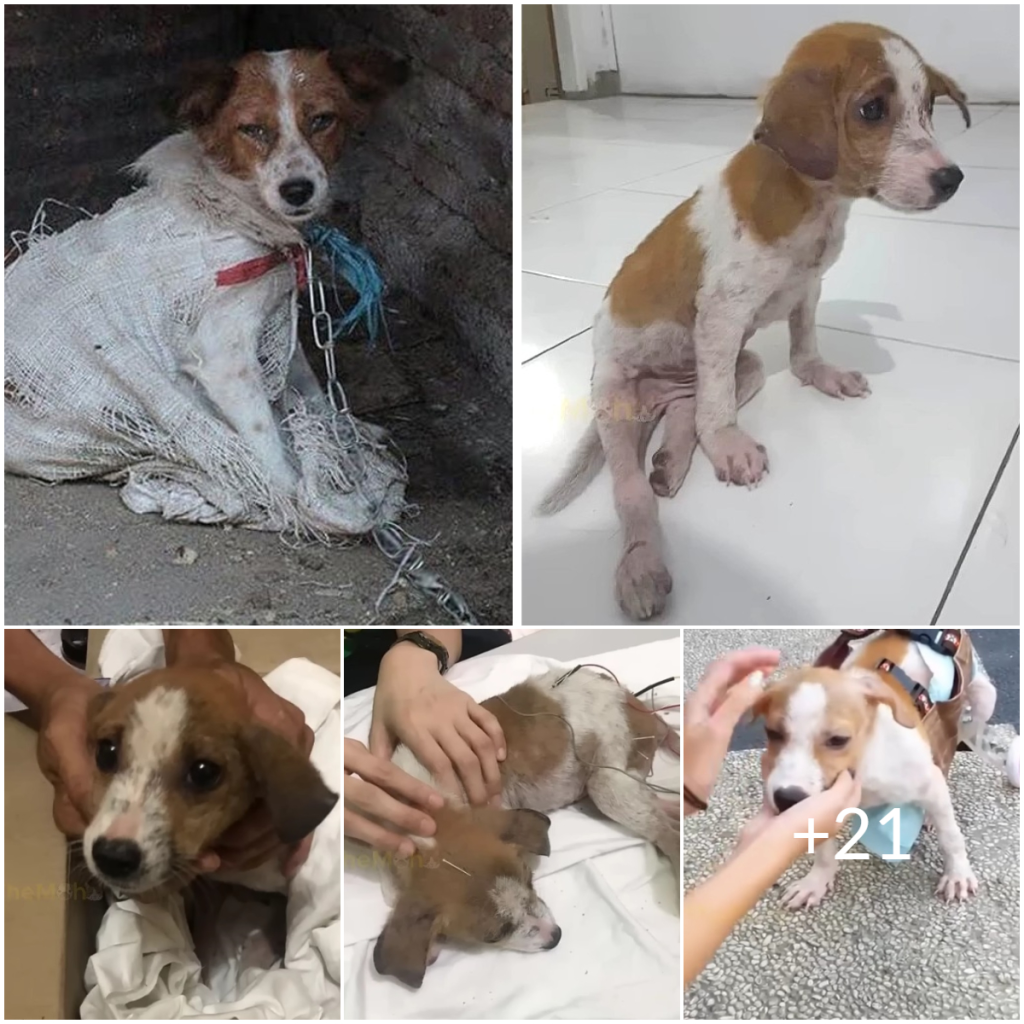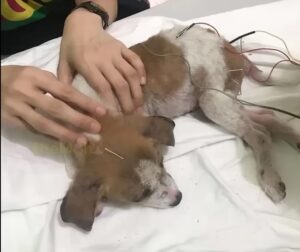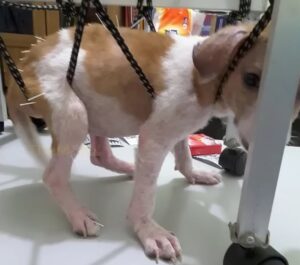
In 2007, a dark chapter in the world of animal cruelty came to light when authorities rescued 51 Pit Bulls from the Virginia home of Atlanta Falcons quarterback Michael Vick. These innocent animals had endured unimaginable abuse, subjected to beatings, electrocutions, hangings, drownings, and forced dogfights.
Out of this horrific ordeal, 48 resilient Pit Bulls emerged as survivors, thanks to the dedication of several rescue organizations and their forever families. One of these survivors, Frodo, recently passed away at the age of 15 on December 18th, 2021. Frodo’s journey serves as a testament to resilience, second chances, and the unwavering commitment of those who fight for justice and rehabilitation.

Frodo’s life was a stark contrast to the year he spent in hell at Michael Vick’s compound. Once rescued, he was embraced by a loving family and pampered like a prince for the next 14 years. His passing left a void in the hearts of those who knew and cared for him, particularly BAD RAP, an Oakland-based nonprofit animal protection group that played a pivotal role in advocating for and rehabilitating the Vick dogs.

In a touching Facebook post, BAD RAP bid farewell to Frodo: “To Frodo – We all adored him. He was one of the most valiant survivors we’d ever met.” His passing was peaceful, surrounded by the love of his family, who ensured his final moments were filled with comfort and care.

Frodo’s journey wasn’t just a personal triumph; it became a symbol of hope and resilience for Pit Bulls and dogs with difficult pasts everywhere. BAD RAP, with its extensive experience in working with dogs rescued from dogfighting rings, always believed in the potential for these dogs to be rehabilitated and reintegrated into loving homes.
Frodo’s story dispelled the negative stereotypes associated with Pit Bulls and underscored the transformative power of patience and kindness in a dog’s life. He exemplified the importance of early socialization for dogs rescued from cruelty incidents, showing that with the right environment and loving care, even the most timid and scarred animals can thrive.

Kim Ramirez, Frodo’s adoptive mother, shared insights into his journey, explaining how mechanical sounds and sudden movements used to terrify him. She described the challenges of helping Frodo overcome his past trauma, such as his fear of ceiling fans and microwave popcorn, which likely reminded him of the traumatic events he had witnessed.

Throughout his life, Frodo enjoyed the devoted care of the Ramirez family, who accommodated his needs, including transporting him in a stroller when his legs began to fail. His story was a testament to the healing power of love and the resilience of animals.

Frodo’s passing is a reminder of the enduring legacy of the 48 survivors of Michael Vick’s dogfighting ring. These brave dogs were given the opportunities they deserved, and despite their challenging backgrounds, they lived happy lives, proving that remarkable transformations are possible with compassion and commitment.
While Michael Vick’s actions were reprehensible, the high-profile case did raise awareness about dogfighting and its devastating consequences. It also shifted public perception of Pit Bulls, showcasing their potential for rehabilitation and adoption. Frodo and his fellow survivors are living proof that even in the darkest of circumstances, there is hope for a brighter future.

As we bid farewell to Frodo, we honor his memory and the countless animals who have found their second chance at life through the dedication of animal rights activists and the kindness of loving families. Frodo’s story will continue to inspire us to fight for justice, compassion, and a world where every animal can thrive.
Desperate Puppy Trapped in Slaughterhouse, Pleading for Help with Heartbreaking Eyes

Meet Toby! This story began with a heartbreaking photograph that broke our hearts. Toby was bound and wrapped in a bag, his eyes filled with terror and misery. His life was hanging by a thread, with the fear of execution just minutes away. We realised we needed to move quickly.

We rushed Toby to the vet since his condition was critical. Toby’s ordeal had rendered him paralysed, a defence mechanism, a desperate attempt to protect himself from the horrors of the world. He had clearly lost trust in humanity, and his initial check found no broken bones. The idea of crushed nerves was investigated, but one thing was certain: Toby had suffered greatly.

Toby was extremely resilient despite his pain and terror. He never complained, silently suffering the trials that life had placed upon him. Toby, like any other dog, deserved a chance at a normal existence, in our opinion.
The road to recovery began with acupuncture, and Toby surprised us by being unusually calm and cooperative. The tiny angel gradually began to trust us, and his true beautiful nature began to come through.

Today, Toby exudes happiness. While his walk remains difficult, his eyes tell a different story – one of joy, resilience, and unexpected optimism. His left leg has steadily grown stronger, allowing him to lift his body and take the first steps towards a brighter future.
Many people have been following Toby’s growth, and one generous woman gave him a wheelchair. It was an exciting time for Toby as he relished his newfound freedom. He now runs everywhere, a testament to his tenacity.

But Toby’s adventure does not end there. He continues to undergo acupuncture treatments and benefits from swimming therapy. Every day, he lives a life full of happiness, love, and caring.

It’s hard to believe that just four months ago, Toby’s life was in jeopardy. He might not have lived to see this day if fate had been one minute later. Toby’s story is a testament to the power of kindness, resilience, and second chances. He is a living reminder that every being is deserving of love, care, and the chance to live a life of happiness and purpose. Toby, you genuinely deserve all of the world’s love.



Leave a Reply